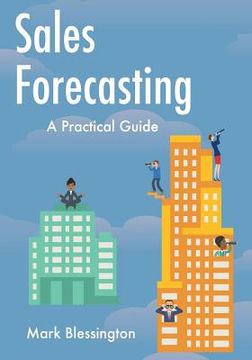Synopsis "Sales Forecasting: A Practical Guide (in English)"
Sales Forecasting is a practical guide for beginning and intermediate sales forecasters. The book does not use complex formulas. Instead, it is designed around the author's application of the learning curve to sales forecasting. Millions of sales forecasts are made by hundreds of thousands of people every year. Sales forecasts for every product and every sales territory in the world are made at least once a year, if not monthly. Then there are various aggregations of these forecasts, such as product to product line to division, and territory to district to region. Further, multiple functional areas across the company make sales forecasts. Sales, marketing, finance and manufacturing are all involved, at least on an annual basis, and often much more frequently. The sad truth is that few forecasters have any formal education or training on the subject. Part of this is because most forecasting books use numerous complex formulas, which are arcane, intimidating and off-putting. Another reason is that sales forecasters are encouraged to place too much trust in forecasting software by vendors who tend to make exaggerated and unsubstantiated claims about forecasting accuracy. Sales Forecasting breaks new ground. It re-invents the process of teaching the subject of sales forecasting. It is designed around the learning curve. The author's experience in day trading, along with decades of sales and marketing consulting, taught him the essential ingredients of sales forecasting. These are provided in Part 1 of the book. The first and most important skill is error measurement. The author makes a clear declaration about the best method and demonstrates its use throughout the book. The second skill is testing, and the author demonstrates how to divide historical sales data into in- and out-samples, calibrate models on the in-sample, and assess model accuracy by forecasting the out-sample. The third and fourth skills are avoiding linear extensions and mastering exponential smoothing. Part 1 is concluded with a description of the whole forecasting process and what is called "five-step forecasting." Part 2 moves into intermediate forecasting. Leading software packages are assessed through the author's research. Very little is published on forecasting software assessment, so this chapter plays an important role. Then ARIMA and ARIMAX are taught and demonstrated through multiple examples. These two methods, combined with exponential smoothing, form the foundation of intermediate forecasting. Perhaps the most exciting chapters in Part 2 involve aggregation. This is a fairly new field and it is growing rapidly. The author identifies some important gaps in the field, then fills them with his own research. Anyone involved in sales forecasting can benefit from these important findings. A chapter is dedicated to demonstrating the application of sound techniques to common forecasting challenges in marketing and sales departments: product planning and quota setting. It becomes quite clear that traditional methods generate far more error than the basic sales forecasting techniques taught in this book. The author also examines the topic of handicapping, or determining how much confidence to place on a forecast. He introduces the concept of "true confidence ranges" and also demonstrates the application of Bayesian probabilities to sales forecasting. To conclude the book, the author explores economic forecasting and closes with a discussion of common forecasting pitfalls to be avoided at all costs.

